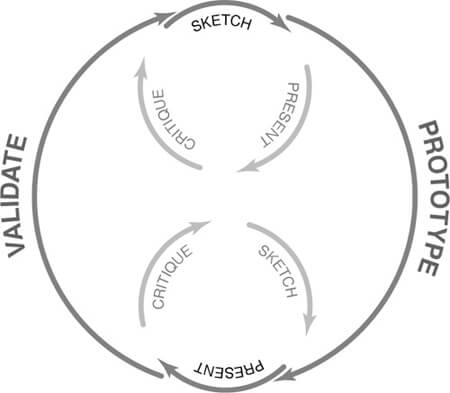Mobile applications are continuing to rise in popularity and have become an integral part of our daily lives. Aesthetics, simplicity and design are judged within just a few minutes of the initial click. Highly rated and popular applications have set themselves apart by their ease of use and performance. At an enterprise level, it is essential that an application is highly functional, sleek and embraces novel mobile trends. At the heart of this challenge, lies a need for a lean user experience.
The principles for a lean UX have been predefined, and if followed, would harmonize the preexisting creative and business processes in Agile Development.
Lean UX Principles:
- Design + Product Management + Development = 1 team
- Externalize!
- Goal-driven & outcome-focused
- Repeatable & routinized
- FLOW: think -> make -> check
- Focus on solving the right problem
- Generate many options
- Decide quickly what to pursue & hold decisions lightly
- Recognize hypotheses & validate them
- Research with users is the best source of information & inspiration
Lean UX is practicing user experience in the framework of Agile development. It is not a typical UX method; it is a business strategy that involves essential UX principles. When business strategies and user problems are evaluated in conjunction, a more holistic solution can be found.
An enterprise can leverage Lean UX principles in order to streamline their development process. Including key members from different groups such as product managers, developers and analysts, would allow for problem solving from multiple angles. The beauty of the Lean UX method is that it can be implemented to cater to the needs of the enterprise in question, therefore suitable to a variety of fields.
The fundamental takeaway is that a joint collaborative effort, company wide, can result in addressing issues and finding solutions effectively resulting in client satisfaction.
The below graphic taken from Stack Exchange illustrates the process.



